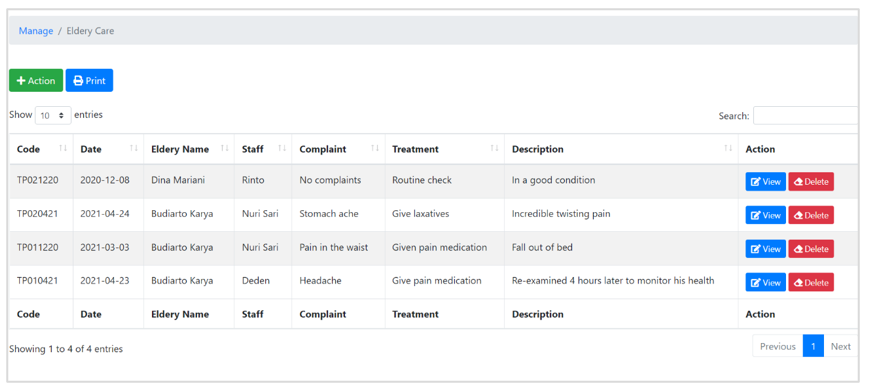Implementation of human-centered design methods in designing application interfaces for nursing home service
Keywords:
nursing home, HCD, interface, EUCSAbstract
In a nursing home, the elderly gets health services to support their daily life. These services are documented and reported periodically to elderly families. In addition to managing information about nursing services, there is other information that must also be managed properly to help the smooth operation of the nursing home. To support the information management process, reliable software is needed to have the functions and benefits that are in accordance with the needs. One of the supporting components that contribute to building good software is interface design. This study will discuss the design of nursing home service application interfaces that have fields, characteristics, and functions that are different from other fields, especially the field of special health services for the elderly. The purpose of this study is to provide an overview and insight to desktop, mobile, and web application developers regarding aspects of designing an interface that is acceptable to system users in nursing homes. This will certainly make it easier for developers to produce good and acceptable software. The design of the interface is carried out using the Human-Centered Design (HCD) method which applies a user-focused design approach so that it makes it easy to understand what their needs are. There are several stages in HCD, namely the stage of identifying and determining the context of the user (Understand and specifying the context of use), the stage of identifying user requirements (Specifying the user requirements), the stage of producing design solutions (Producing design solutions) and the stage of evaluating the design (Evaluating the design). This research produces an interactive and easy-to-use interface design because the testing process uses a prototype as a demonstration tool. The test results using the End User Computing Satisfaction (EUCS) method show that 88.25% of users are satisfied with the design made and in line with the needs of users in a nursing home.
Downloads



